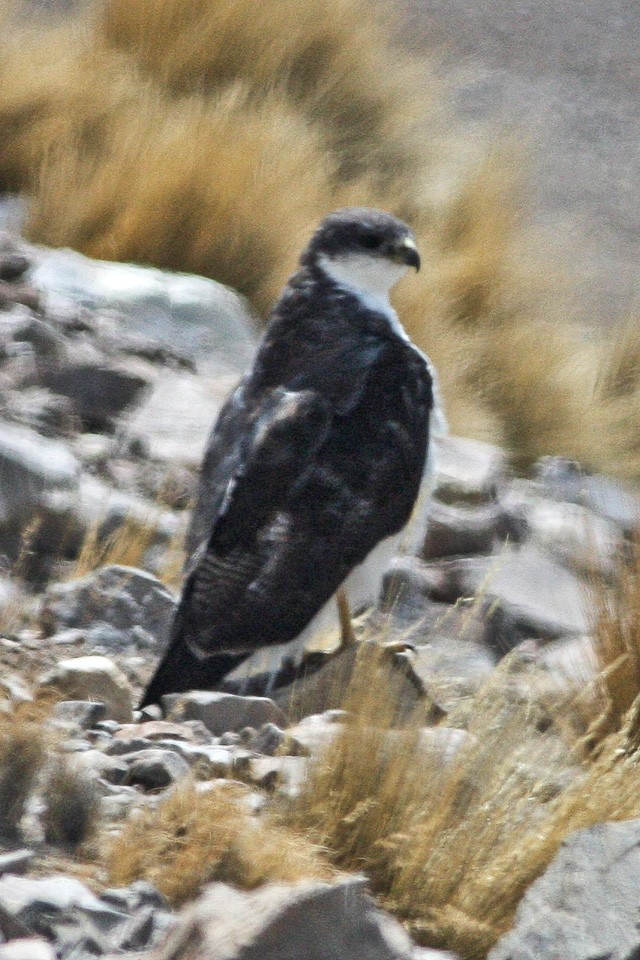Variable Hawk
A species of Buzzards and Buteo Hawks Scientific name : Geranoaetus polyosoma Genus : Buzzards and Buteo Hawks
Variable Hawk, A species of Buzzards and Buteo Hawks
Botanical name: Geranoaetus polyosoma
Genus: Buzzards and Buteo Hawks
Content
Description General Info
 Photo By Ron Knight from Seaford, East Sussex, United Kingdom , used under CC-BY-2.0 /Cropped and compressed from original
Photo By Ron Knight from Seaford, East Sussex, United Kingdom , used under CC-BY-2.0 /Cropped and compressed from original Description
The name variable hawk is fully deserved, as both sexes occur in several morphs. Adults of all have a white tail with a contrasting black subterminal band and grey wings barred dark (in flight from below, the remiges appear whitish with fine barring and a broad black tip). The remaining plumage varies from very dark grey to whitish, and some individuals have reddish-brown to the underparts. Females usually have a reddish-brown back, which males usually lack, although at least some males also have this. The taxon exsul from the Juan Fernández Islands is far less variable, being whitish below and grey above in adults of both sexes. At least 27 distinct adult plumages are known in this species, possibly the most of any raptor (although the widespread red-tailed hawk & Eurasian buzzard have also been noted for a widespread but more uniform spectrum of plumage variations) with no relationship to morphometric variables and only minor geographic variation. 
Size
56 cm
Habitat
Variable hawks occupy open habitats at all elevations. The red-backed race inhabits the widest range of areas of the variable hawk races, including above tree line in mountains, Pacific coastal foothills, Patagonian steppes, agricultural areas and edges of river galleries, beech woods and humid premontane and lowland forests. Though often the most likely race to be found in lowlands, even the red-backed is less than common below an elevation of 500 m (up to 3,000 m). The Juan Fernandez race is found on the islands' volcanic slopes and barren grazed grasslands at all elevations. The Puna race are often a common element above tree line in páramo and puna habitat, at higher elevations (5,000+ m) than almost any other raptor. Smaller numbers of the latter race may visit mountain scrub and stunted Polylepis woodland at as low 900 m (but rarely below 2,900 m). 
General Info
Behavior
They are most often seen soaring on warm thermals but may be seen on almost any type of raised perch (from sign posts to large trees). They prey on almost any small to medium-sized animals that can be caught, but smallish mammals comprise more than 90% of prey in some studies. The most commonly recorded prey includes cavies, tuco-tucos, rabbits, mice and páramo rats. Earthworms, weevils, orthopterans and other invertebrates are often taken. Birds are sometimes taken, including tired petrels around Juan Fernández Islands. Other prey include other rodents & lagomorphs, frogs, lizards, snakes, and fish. The variable hawk hunts with prey being spotted while soaring from the air and pinned on the ground. Breeding is at various seasons and may be variable for all races. They build large stick nests on any elevated structure available, and sometimes breed cooperatively. One to three eggs are laid. The incubation period is 26 to 36 days. The nestlings fledge anywhere from 40 to 74 days. The larger-bodied, high-elevation hawks take longer to incubate and much longer to fledge than lower elevation hawks. 

 Photo By Ron Knight from Seaford, East Sussex, United Kingdom , used under CC-BY-2.0 /Cropped and compressed from original
Photo By Ron Knight from Seaford, East Sussex, United Kingdom , used under CC-BY-2.0 /Cropped and compressed from original